A detox can be as simple as changing our habits. Many at-home products can expose us to harmful toxins – pollutants, chemicals, and metals – which can negatively impact our health. By eliminating toxin intake, our body’s natural detoxification system can promote weight loss, fortify reproductive health, and improve the overall quality of life.
Although we often consume without a second thought, this list of nine detox lifestyle recommendations may offer you better alternatives.
Water
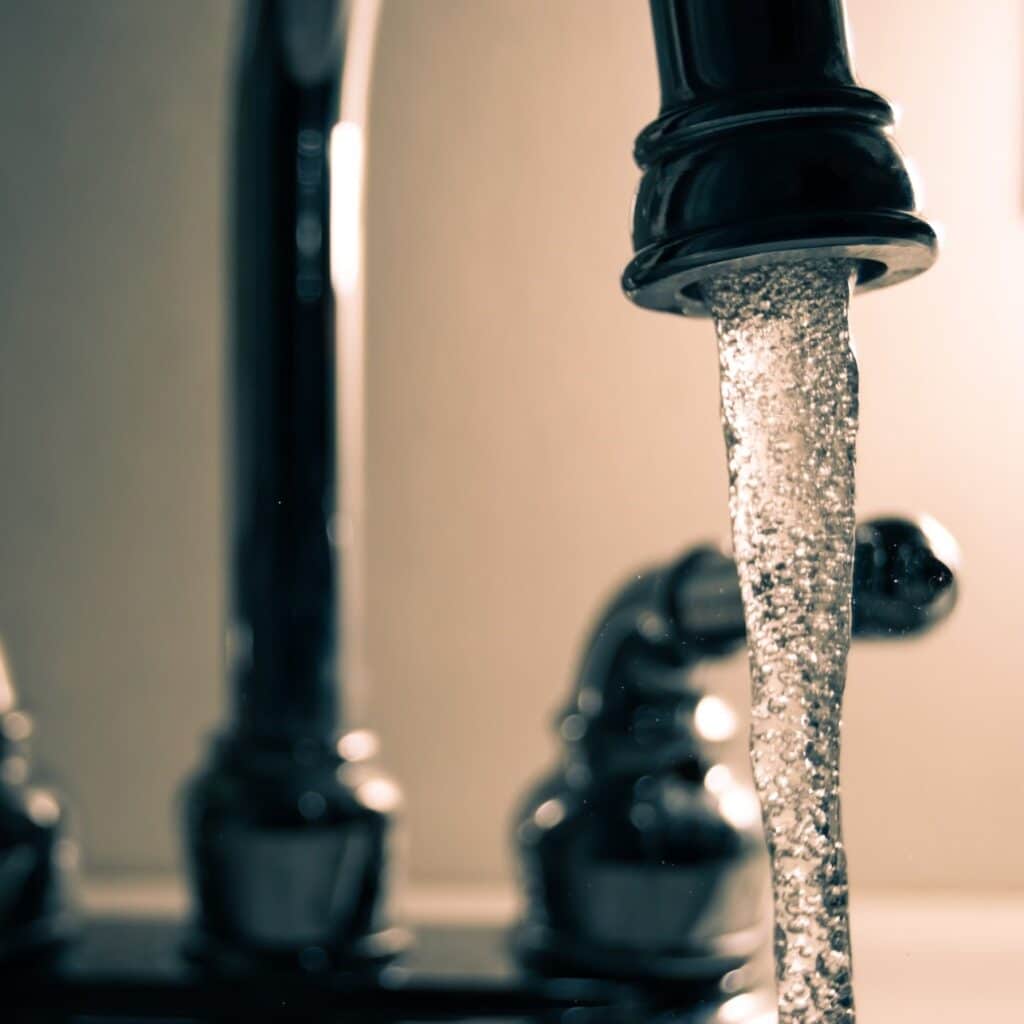
The Problem: City water often contains heavy metals, as well as fluoride, chlorine, medications, hormones, antibiotics, birth control, and psychotropic drugs; quite the cocktail for a shared, centralized water source. We shouldn’t put well water on a pedestal either; private pipes can be plagued with sediment due to drilling, sludgy runoff, or other earth-disturbing activities. High levels of the contaminants above will noticeably affect the smell and taste of your water supply, not to mention the effects they can have on your insides.
The Solution: Use purified or distilled water for drinking and cooking in order to minimize the ingestion of hazardous materials. Inadequate removal of calcium and magnesium carbonate (otherwise known as “hard water”) causes scale and soap scum build-up, so be on the lookout for these visual cues; get them under control before they take over.
A good rule of thumb is that if you smell something wrong, there probably is something wrong. Consider local experts to evaluate your water supply. Installing a home filtration system is never a bad idea, so long as it’s within your budget. Be sure to change your filters regularly; drinking water from a dirty filter is hardly better than no filter at all.
Household Cleaners
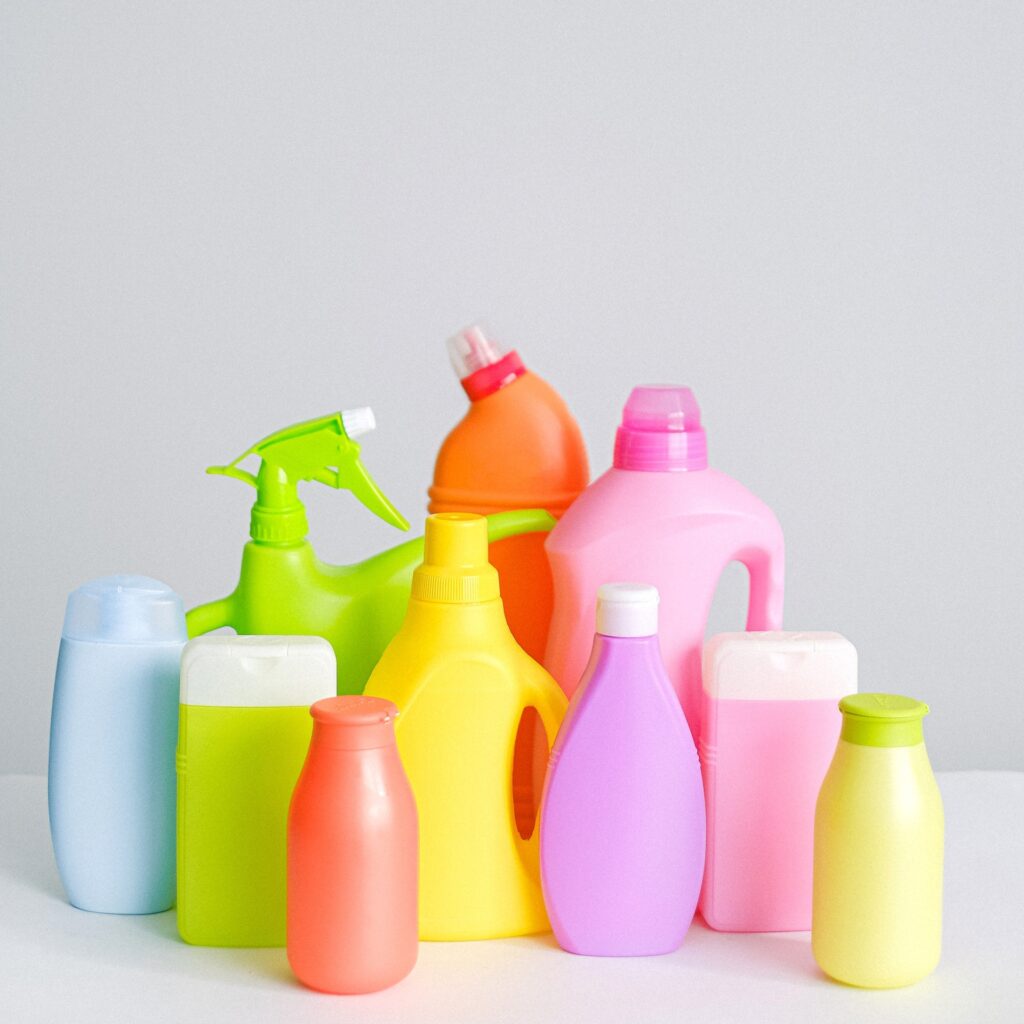
The Problem: Whether it’s baked beans on the stove or toothpaste on the mirror, the messes we make often need an army of under-the-sink products to right our food-based wrongs (what, toothpaste isn’t food?). The problem with this knee-jerk is that household cleaners can often contain several harmful toxins, including formaldehyde, ethylbenzene, petroleum distillates (petrochemicals), chlorine, benzene, butyl cellosolve, and phenol. Say that five times fast.
What’s more, when combined with chlorine, fluoride, and chemicals in water (remember?), dishwashing detergent can form invisible gaseous toxins that float around our kitchens via steam. These toxins and fumes can be ingested in the food we eat, granted we wash our dishes before dinner. Still, we want those counter brownies to taste like chocolate – not chlorine.
Fabric softeners can contain six neurotoxins that alter endocrine hormones, contributing to migraines and decreasing the ability to lose weight. Laundry detergents can also contain cancer-causing agents. Well, that escalated quickly. Who knew the laundry room could be so dangerous?
And for good measure, let’s assume that toilet bowl cleaners’ fumes are harmful to breathe (this assumption is true).
The Solution: Use these products sparingly. Opt for natural brands like Seventh Generation, Simple Green, Ecover, Ecosafe, or Life Tree. It’s a little-known fact that dry-cleaning services can be as organic as that over-ripened banana you’ve got in your lunch pail. These eco-friendly companies don’t use cleaning solvents that contain perchloroethylene or other harmful pollutants. Good for you, and good for the environment, too. Everyone wins.
Cookware

The Problem: What’s a kitchen without some danger? Nonstick, Teflon-coated pans release up to six toxic gases when heated on the stove. These fumes can cause breathing difficulty, fever, and soar throat. Aluminum pans release toxins linked to neurological conditions.
The Solution: Take preventative measures in the kitchen. Opting for stainless steel, glass, ceramic, or non-toxic cookware can significantly limit the risk of ingesting toxic fumes. Though it may be normal with prolonged use, take note of any discoloration on your pans and utensils. If you smell something funky, it might not just be your cooking; it may be a severe problem with your cookware.
Plastic
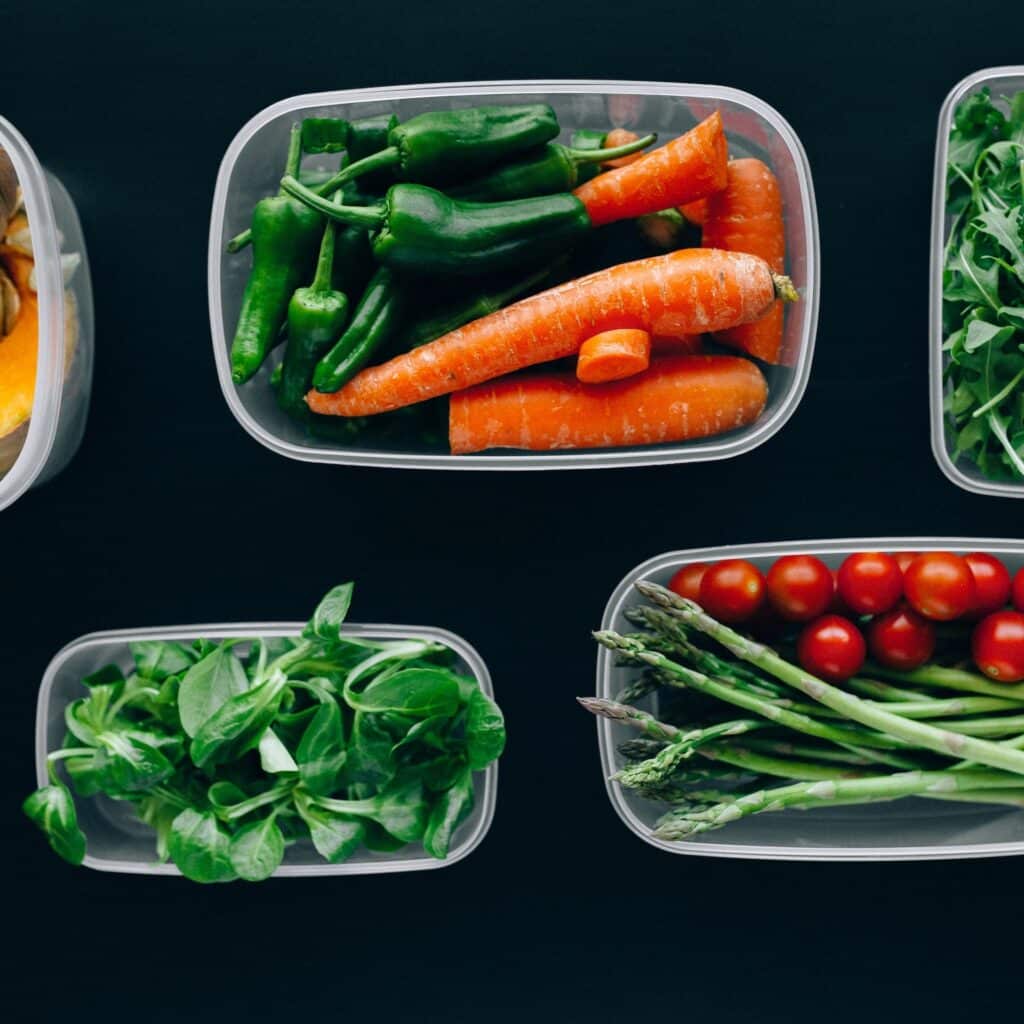
The Problem: Aside from negatively affecting wildlife and polluting the planet, plastic is the best, right? WRONG. Plastics contain BPA, phthalates, and other chemicals that disrupt hormones in the body which can lead to infertility and other health issues. Changing the temperature of plastic storage containers (brands like Rubbermaid or Ziploc) can drive dormant chemicals into your leftovers. In other words, green beans aren’t the only reason that casserole tastes bad.
Heat triggers a release of toxins from plastic, but acidic foods – like tomato sauces, citrus fruits, and vinegar-based hot sauces – can just as easily pull chemicals into your meals, even without heating. Avoid these combinations at all costs to ensure untainted bites.
The Solution: Store leftovers and beverages in glass containers. Aluminum is acceptable if glass storage is not available. If you must use plastic, let hot foods cool before placing them in the containers. Avoid reheating items in plastic, as well. Extensive refrigeration or freezing is not recommended.
Beauty Products
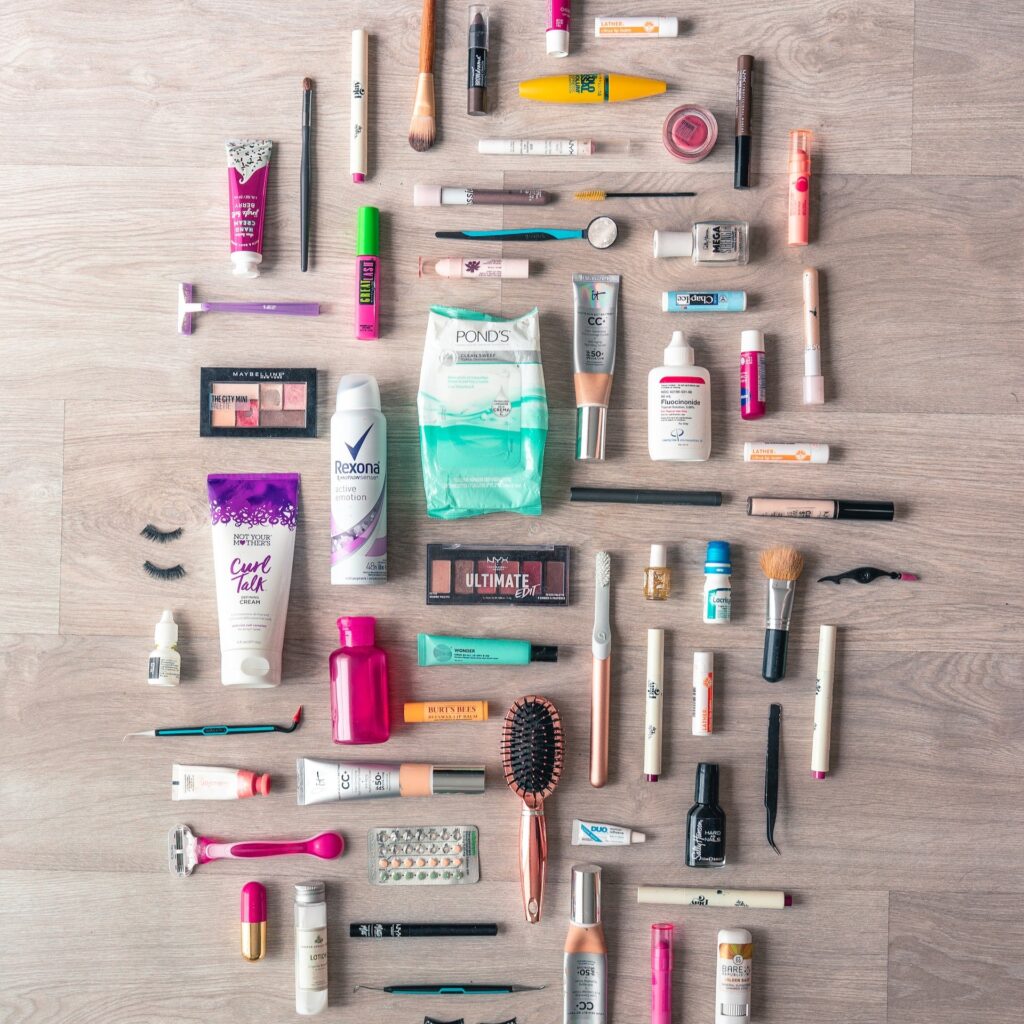
The Problem: Several personal and beauty products contain toxins (such as diethanolamine, BPA, lead, propylene glycol, sodium lauryl sulfate, and phthalates) that can seep into the skin after prolonged contact. These toxins are commonly found in cosmetics, shampoos, soaps, bubble baths, toothpaste (that stuff on your mirror), and baby wipes. Nothing is sacred, apparently.
The Solution: Do your research. The best beauty products pride themselves on being BPA- and toxin-free. Also, non-animal-tested products are not a bad idea either, environmentally and morally speaking. Seeking out these natural beauty products can be the difference between looking great and feeling great, too.
Home Furnishings

The Problem: Synthetic household carpets, cheap appliances, and shoddily-fabricated furniture are no longer considered college chic – they are harbingers of toxins! (Do you sense the trend, here?) These products are capable of producing harmful toxicants that affect air quality that link to breast cancer, respiratory problems, and leukemia. Walking on, cooking in, or relaxing with these products can release toxins into the air of your living space.
The Solution: Eating such home furnishings is never recommended, but breathing in their fumes is preventable. Explore natural options, such as solid wood, natural fibers, and safe sealants. Although older appliances may look cooler, their build hardly outweighs the toxins they may give off. Always recycle when appropriate.
Air Quality

The Problem: Most quality homes and apartments are efficiently sealed. So what’s the issue? Though this seems like the opposite of a negative thing, a decent sealant can cause chemicals and fumes to become trapped inside and unable to escape. That’s the problem. Homes are insulated and caulked to keep the good in – such as heat and air conditioning – although those sealers, in turn, keep everything else in, too – including those unwanted toxins.
The Solution: For starters, running fans throughout the house is an easy, cost-effective solution to get air flowing, especially during the summer months. Stagnancy is the issue at hand, so frequently ventilating – by opening windows and doors, when applicable – is key. Contact your local air quality experts to see what air filtration systems are available to you, as well. If your air needs freshening, use natural oil diffusers as opposed to chemical-containing air fresheners and candles (they often contain formaldehyde)!
Mold
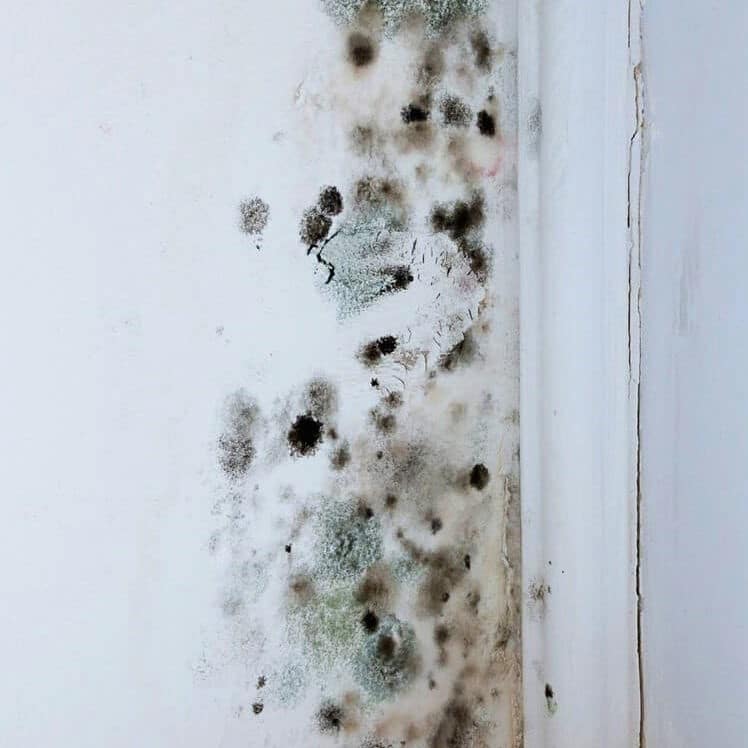
The Problem: Mold comes in many different colors and variations, but, clearly, none of them are good. The fungal growth feeds off of dampness and moisture, so any room in the house that is constantly bombarded with water droplets – directly or in the air – is susceptible to mold. This includes bathrooms, kitchens, laundry rooms, and basements.
Mold – especially the dreaded black mold – can affect leptin receptors, which will inhibit the body’s natural ability to lose weight and cause hormonal dysregulation. Insomnia, chronic fatigue, and unexplained respiratory-affecting illnesses may also be linked to mold.
The Solution: Catching mold early will halt its growth and prevent the infection from spreading to other areas of the house. With protection, mold can safely be removed from sinks, bathtubs, and walls with common household cleaning products (see Household Cleaners) and a little elbow grease. Wearing gloves, masks, and other protective clothing can help ensure you’re not speeding the absorption of mold. If your skin comes in direct contact with mold, be sure to thoroughly clean the affected area.
Be on the lookout for mold in your home. If you notice a considerable amount in a common area, don’t take matters into your own hands; call your local experts to figure out the next steps. Dislodged spores can float around and be ingested, so it’s best to have professional inspectors lined up for the job. Consider an air filtration system to better ventilate your home (see Air Quality).
Electric and Magnetic Fields (EMF)

The Problem: EMFs are invisible areas of energy, often referred to as radiation. EMFs are given off by cell phones, tablets, computers, hair dryers, fans, and other electronic devices. They can cause cellular inflammation and disrupt the chemical structures of tissue in high concentrations. The irony that this is being read on an electronic device is not lost on us.
The Solution: The single best way to prevent high levels of EMFs is to decrease exposure to devices. Placing cell phones in airplane mode, turning Wi-Fi off, or turning devices off entirely can significantly reduce EMF intake. The use of protective cases has been known to decrease EMF exposure, and the use of absorbing rocks and crystals has also helped. Sometimes the best solution is to just take a break.
For more information on detox recommendations or to schedule a consultation with one of our providers, call us at 937-458-5084.






